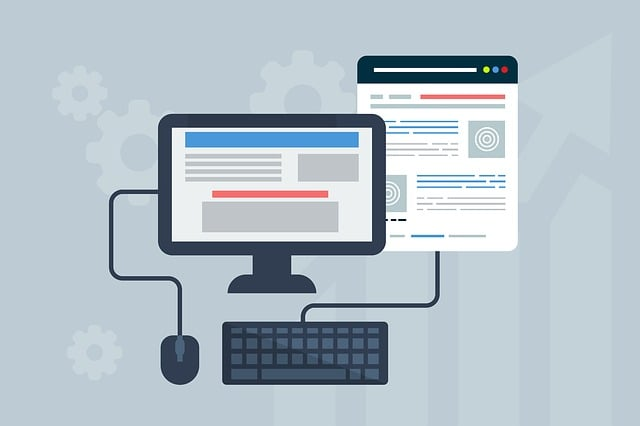
The terms user experience (UX) and user interface (UI) are ubiquitous in the world of digital design, yet not everyone understands the subtle differences and interaction between the two. UX refers to the overall experience a user has with a product or service, from functionality to usability. UI, on the other hand, focuses on the visual design and interfaces through which users interact with the product. Both play a crucial role in creating products that are not only aesthetically pleasing, but also intuitive and enjoyable to use.
A good understanding of UX and UI is essential for anyone working in digital product development. While UX designers aim to optimize the overall user experience, UI designers focus on the visual design of the user interface. This collaboration is crucial to ensure that the final product is not only functional but also visually appealing. In this guide, we will explore the basics of UX and UI, highlight their differences and synergies, and clarify the importance of each aspect in product development.
UNDERSTANDING THE BASICS OF UX (USER EXPERIENCE)
UX design, coined by Don Norman in the 1990s, is a multifaceted approach that focuses primarily on optimizing the user experience of digital products such as websites or apps. It’s about understanding the needs and desires of a user and incorporating these insights into the design. UX designers work closely with other facets of a company to ensure that the end product not only works, but is also satisfying and pleasant to use in every respect. This comprehensive approach makes UX design a central part of product development in the digital age.
THE ROLE OF A UX DESIGNER
UX designers are responsible for creating a seamless, enjoyable experience using an application. They focus on the design of the product, with the goal of ensuring intuitive user experience. This includes conducting usability tests to ensure that the final product meets user needs and expectations. Their work is crucial to the success of a digital product, as it directly influences user satisfaction and engagement.
CREATING USER-CENTERED DESIGNS
Creating user-centered designs starts with a deep understanding of end-user needs and behaviors. At the core is the development of UI design, which is closely linked to UX strategy to create a highly interactive yet intuitive user interface. This process requires continuous evaluation and adjustment to ensure that the final product not only serves users, but also guides and supports them on their journey through the product.

JOY OF USE: HOW UX INCREASES USER ENJOYMENT
The “Joy of Use” describes the pleasure and excitement that users experience when dealing with a well-designed product. It is about evoking positive emotions beyond pure functionality that strengthen the bond with the product. An excellent UX plays a crucial role here, as it not only optimizes usability, but also ensures that interacting with the product itself is a pleasant experience. This not only promotes customer satisfaction, but also customer loyalty and ultimately the success of the product on the market.

INSIGHT INTO UI (USER INTERFACE) DESIGN
UI design focuses on the visual design and user interface of a product. These are the visual elements through which a user interacts with a digital product, such as the layouts, colors and fonts. UI designers ensure that the design is not only aesthetically pleasing, but also enables clear and intuitive navigation. A good example of UI design is Windows Explorer, which uses responsive design to ensure that user interfaces remain consistent and user-friendly across different devices.
THE RESPONSIBILITIES OF A UI DESIGNER
UI designers play a crucial role in UI design by dealing with the visual design and interactivity of the user interface. Their job is to create visually appealing designs that are also functional and intuitive to use. They must always keep the needs and expectations of users in mind to create an interface that not only looks good but is also easy to navigate.
VISUAL DESIGN AND INTERACTIVITY
Visual design and interactivity are central aspects of UI design. They include the selection of colors, fonts, images and other visual elements that together make up the overall appearance of the user interface. In addition, it is about the design of interaction elements, such as buttons and menus, that determine how users interact with the product. Effective visual design promotes usability and contributes significantly to creating a positive user experience.
THE INTERFACE BETWEEN USER AND PRODUCT
The user interface serves as the interface between the user and the product and is therefore crucial for interaction. A clear, intuitive user interface allows users to interact with the product efficiently and without frustration. This requires UI designers to have a deep understanding of user needs and use this knowledge to design an interface that meets those needs. A well-designed user interface not only increases user enjoyment but also promotes user efficiency and productivity.

THE SYMBIOSIS BETWEEN UI AND UX
UI and UX are closely related and their symbiosis is crucial for creating successful digital products. While UI focuses on the visual aspects and interaction, UX encompasses the entire user experience, from usability to emotional experience. The tasks and responsibilities in both areas partially overlap, which requires close collaboration between UI and UX designers. Understanding the two terms and their interdependence is fundamental to developing products that are not only functional but also visually appealing and user-friendly.
WHY UI DOESN’T WORK WITHOUT UX
UI designers need to understand that visual design is only one piece of the puzzle. Various aspects of the user experience, such as user guidance and interactivity, are crucial to the success of websites and apps. Without a solid UX foundation, even the most appealing visual design cannot ensure that the product meets the needs and expectations of users. Close collaboration between UI and UX designers is therefore essential to create a harmonious overall experience that is both functionally and aesthetically convincing.
THE IMPORTANCE OF SEAMLESS USER EXPERIENCES
A seamless user experience allows users to interact with the product intuitively, without encountering obstacles or ambiguities. The goal is to create an environment in which users can move naturally, as if they were already familiar with the interface. This requires careful planning and design of all components that interact with the user to ensure that using the product is as smooth and enjoyable as possible.
PRACTICAL EXAMPLES AND APPLICATIONS
Good user experience design is key to the success of many digital products. It not only enables more efficient use, but also increases user satisfaction and loyalty. UX designers work to optimize the user experience by improving the usability, accessibility, and enjoyment that users feel when using a product. Practical examples of successful UX design can be found in many areas, from simple apps to complex enterprise systems, demonstrating the critical role that UX plays in the design process.
FROM THEORY TO PRACTICE: SUCCESSFUL IMPLEMENTATION OF UI AND UX
UI designers and UX designers work hand in hand to create digital products that are both functional and aesthetically pleasing. In both cases, whether websites or apps, a successful implementation is when the final product provides users with an intuitive, efficient and pleasant user experience. UX UI design is an ongoing process that requires constant adaptation and optimization to meet the changing needs and expectations of users.
THE UX UI KETCHUP MEME – A HUMOROUS EXPLANATION OF THE DIFFERENCES
The UX-UI Ketchup meme offers a humorous but apt depiction of the differences between UX and UI. It highlights how UX design is concerned with functionality and user experience, while UI focuses on aesthetic presentation and visual design. The meme illustrates that both aspects are essential to creating a successful product and emphasizes the importance of harmoniously integrating both disciplines in the design process.
THE FUTURE OF UX AND UI IN THE DIGITAL AGE
Digital transformation is accelerating at an unstoppable pace, and with it the fields of UX and UI are evolving rapidly. UI designers and UX experts are faced with the challenge of keeping up with the latest technologies in order to create innovative, user-friendly interfaces. The future will see an even closer fusion of these disciplines, with artificial intelligence (AI) and machine learning (ML) playing a central role. These technologies offer the potential to take design and user experience to a level never seen before.
INNOVATIVE TRENDS AND DEVELOPMENTS
In the world of UX and UI, innovative trends and developments play a crucial role. They are reshaping the way we interact with digital products. The integration of AI and machine learning in particular promises to fundamentally change the understanding of design.
HOW AI AND MACHINE LEARNING INFLUENCE UX/UI DESIGNS
AI and machine learning are revolutionizing UX/UI design by enabling personalized user experiences at a granular level. These technologies analyze user behavior and preferences in real-time, allowing UI designers to design dynamic, customizable interfaces that automatically adapt to the user’s needs. The ability to continuously learn from user interactions will significantly advance the design of interfaces that respond intuitively and act predictively.

FINAL THOUGHTS: THE INSEPARABLE CONNECTION OF UX AND UI
The symbiosis of UX and UI is crucial for the success of digital products. While UI represents the visual and interactive element that looks visually appealing while being functional, UX ensures a seamless and enjoyable user journey. Both disciplines are closely linked and must be carefully coordinated to meet the company’s goals. UI designers play a crucial role in this process by ensuring that the designed user interface not only looks good but also meets the user’s needs.
SUMMARY OF KEY POINTS
The constant evolution of UI and UX is essential for creating outstanding digital products. Close collaboration between UI designers and UX experts is key to developing innovative solutions that are both aesthetically pleasing and functional.
THE CONSTANT EVOLUTION OF UI AND UX IN FOCUS
UI and UX are in a continuous evolution to meet the ever-changing needs of users. UI designers and UX experts work hand in hand to shape the digital landscape. By focusing on designing the user interface and understanding the user experience, they drive the innovations necessary to succeed in an increasingly digital world. The close connection between both disciplines secures the future of digital experiences and underscores the importance of their constant evolution.


